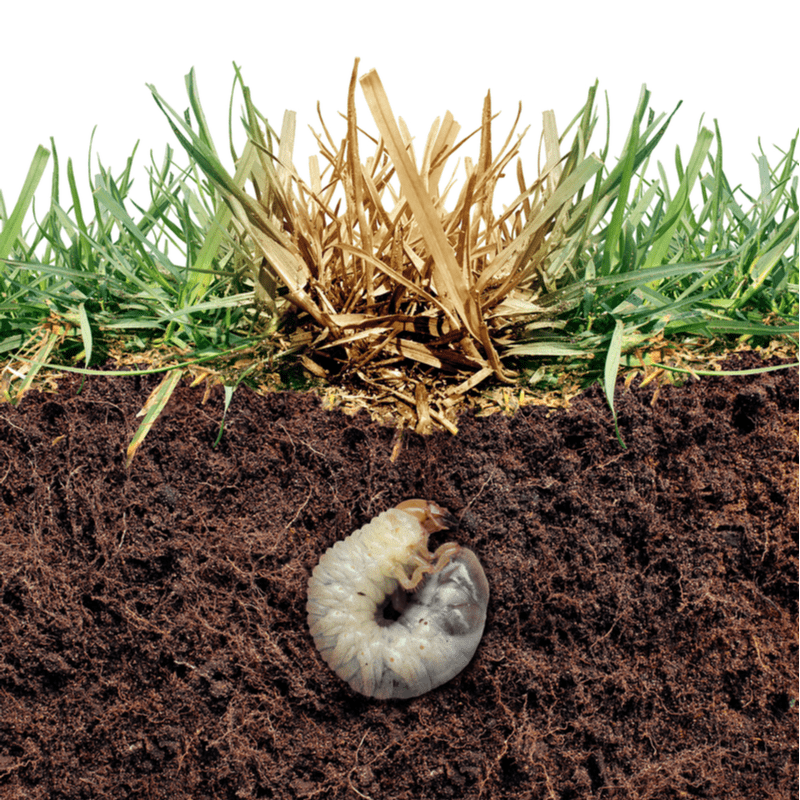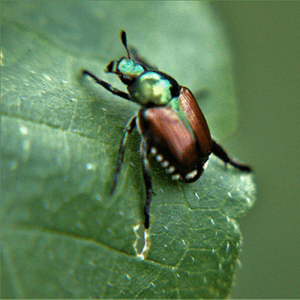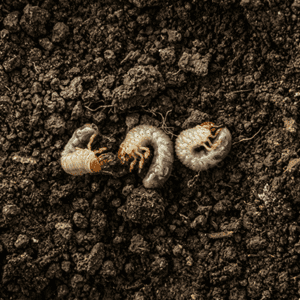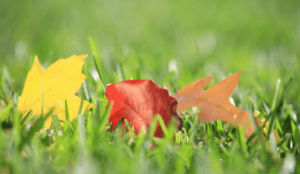There’s a famous saying that goes: out of sight, out of mind. Usually, it refers to things like misplacing your car keys or forgetting what you have in your fridge. Unfortunately, this phrase also applies to one of the most voracious bugs that plague our lawns. We’re talking, of course, about the infamous white grub. These annoying pests lurk beneath the soil and munch on the roots of our turfgrass, causing it to wither and die. Learn how to detect the signs of a grub infestation and how grub treatment can prevent severe damage to your lawn.
A Day In The Life Of A Grub
When female Japanese beetles need to lay their eggs, they look for healthy lawns. Understanding this aspect of their behavior is critical. After investing time and money into making your yard immaculate, the last thing you want is for a mother beetle to ruin your hard work. Once the female finds a suitable environment, she’ll lay her eggs just beneath the soil. They enter their larval stage when they hatch – turning into the white c-shaped caterpillars we call “grubs.” To grow strong, the grubs will dine on the roots of your turfgrass and remain undetected and unbothered by predators. Nine times out of ten, you won’t know you have a grub problem unless you peel back the turf and go looking for them – more on this later. Eventually, these larvae emerge as adult beetles that look nothing like their children. Adult Japanese beetles are up to 1/2 inches long with copper wing covers and metallic green heads. On the other hand, grubs look like white caterpillars with tannish-brown heads.
And if you think you’re off the hook once the larvae are dead, guess again. Adult Japanese beetles are just as hungry as their young, but instead of chowing down on the roots of your turfgrass, they’ll wreak havoc on the grass blades above the surface. But wait – it gets even better! When grass is eaten up, it releases a chemical odor – alerting nearby Japanese beetles, just as the scent of a good restaurant might lure you in. As more beetles arrive, they’ll chew up the grass and continue to lay their eggs. Japanese beetles remain active through September, which means if you don’t take action in spring, you could see season-long problems related to grub and beetle activity. That’s why it’s so crucial to invest in Top Lawn’s pest control services.
Classic Signs Of A Grub Infestation
Grass Feels Different
Two things can happen when turfgrass doesn’t have a robust root system to hold it in place. First, you’ll notice when walking across your lawn that the terrain feels spongy. Of course, healthy grass should be somewhat soft and springy, but you don’t want it to feel like walking on a memory foam pillow. Second, you may discover bumps, divots, or other uneven areas in your lawn that catch on the lawnmower. Without the grassroots to hold the earth in place, the ground will shift and erode, creating an uneven surface. These rough areas can cause drainage issues and puddling water, creating more problems like lawn disease and pest infestations. Mosquitoes need standing water to lay their eggs, so if you don’t address your grub problem, you could wind up with a high mosquito population this summer.
Greater Number Of Animals In Your Yard
If you notice possums, raccoons, skunks, birds, or other animals visiting your yard more often than usual, it’s a good indicator you’ve got grubs. For many critters, grubs are a good food source, so animals will dig and tear into the lawn to get them. As you can imagine, this leaves homeowners with extensive damage that could cost hundreds of dollars to fix. You can preempt this problem by adding spring grub control to your lawn care services.
Grass Seems Wilted But Doesn’t Respond To Treatment
When you notice brown patches on your lawn, your first thought might be to try extra water, fertilizer, or even a fungicide treatment. If the problem is grubs, none of these will have an effect, and you’ll have wasted time and money.
Grass Pulls Up Easily
Remember that grubs feed on the roots of turfgrass, which means that if you suspect you’ve got grubs, you can do a quick test to know for sure. Try pulling up a handful of turfgrass or rolling it back like a new sod roll. If you can do either of those things easily, you’ve most likely got a grub problem. And if you can roll the turf back, you should be able to see the grubby menaces clinging to the underside of the earth.
How To Get Rid Of Grubs In Your Lawn
An annual grub control application is the best way to get rid of grubs and keep them from coming back. This interrupts their destructive cycle before they have a chance to turn into adults themselves and lay more eggs on your lawn. Top Lawn is happy to apply grub control as an add-on treatment for your current lawn care routine, or we can do it as a stand-alone treatment for lawns in need of rescue. If you’re consistent and opt for grub control each spring, you’ll never have to worry about these headache-inducing bugs again.
Get Grub Control Service From Top Lawn
This spring, protect your lawn from the appetite of hungry grubs before they have a chance to devour your turfgrass. Top Lawn is a full-service lawn care company near Canton, specializing in organic lawn services and pest control. Our grub control treatment will knock out any existing grubs and prevent future ones from nesting this season. If you’re ready to set your lawn on the road to better health, give Top Lawn a call at (248) 956-6022, or you can send us a message through our online form here.
For more information on keeping your yard healthy, green, and pest-free, be sure to visit our blog page here.







